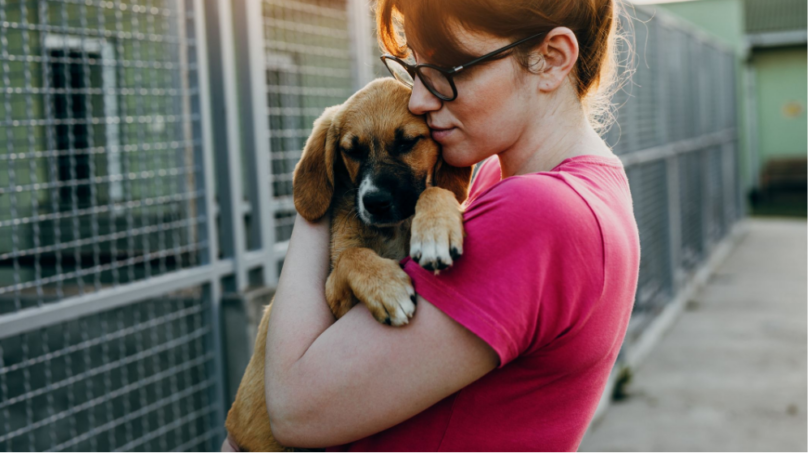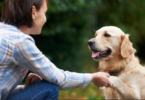Expert Tips For When You’re Ready to Adopt a New Puppy
Welcome a New Dog into Your Family CarefullyBringing home a new pup requires careful consideration. From shelter adoptions to private adoptions, their transition may be challenging for both parties involved.
Shelter staff often observe personality traits of animals before adopting them, yet their true temperament might only become evident weeks or even months post adoption.
1. Look for a Veterinarian
As soon as you bring home a new pup, it is crucial that you find an animal clinic for its medical care and vaccination needs. Not only can your veterinarian provide general health exams and vaccinations; but they may also advise you on modern pet nutrition to promote long-term health and prevent diseases like cancer and kidney problems.
Many shelters and rescue groups will vaccinate, de-sex and deworm your new puppy before adopting. Otherwise, make an appointment with a veterinarian within one week after adoption to get him or her tested and treated accordingly.
Pets can become stressed during transitions, and you want to ensure that they adjust well in their new environment. Furthermore, it is a wise move to purchase pet insurance; pets tend to live longer than we anticipate and can become costly companions; an emergency vet visit for injured or sick animals could easily exceed the costs of regular wellness exams.
2. Get a Crate
Your dog needs his or her own space to unwind and feel secure, which means providing him or her with a secure den such as a crate is the answer.
Crate training your puppy as soon as they arrive home is essential in helping them adjust and become familiar with their new environment. Crate training also prevents accidents by keeping your pup from wandering off or chewing up items they shouldn’t.
Consider purchasing a plastic crate (sometimes referred to as flight crates) that’s easy to clean, difficult for your dog to escape from, and can be broken down and stacked for storage. Once installed in a central room of your house such as living room or bedroom – for instance in living room or bedroom – place the crate there for 30 minutes and take your pup outside every hour or two after that time for pottying sessions – repeat throughout the day as necessary.
3. Get a Leash
As part of any adoption experience, whether through an animal shelter or private owner, it’s essential that some basic supplies be on hand when your new friend comes over – these may include collar and leash, crate, food bowls and toys.
Take time to pet-proof your house. Be sure that any objects, such as electrical wires, clothes, shoes and slippers that you want your dog to avoid chewing are out of his or her reach and safe.
Remove poisonous houseplants, store cleaning supplies, medications and chemicals in locked cabinets or on high shelves and remember to be kind and gentle when welcoming a new dog into their life. They may be anxious and confused at first; be patient and supportive to ease them in.
4. Get a Toy
Your new puppy needs toys, particularly chew toys. Giving them something safe to chew like rubber or rope toys may help satisfy their natural urge to mouth things. Some puppies enjoy toy sticks designed to look like actual sticks; just be wary of splinters or sharp ends!
Some pups find comfort in plush toys, so it is advisable to purchase some. Just watch out for those prone to chewing up or ripping up their stuffing! Additionally, unstuffed ones make great security blankets to calm them before bedtime – find these at your local pet store or order online!
5. Get a Bed
Do not allow an unsupervised 2-year-old access to your entire house; similarly, keep furniture, cleaning products, poisons and jewelry out of reach of any new puppy in order to make them feel safe and protect them.
DiCicco suggests providing your pet with their own bed or space in the house as soon as they enter your home, to help ease anxiety. Establishing a sleep schedule will also facilitate long-term bonding. This is essential to having a successful and long-term relationship with your animal companion.
6. Get a Food Bowl
Puppies must eat on a set schedule. This is especially important if you want them to sit or stay while they eat, and also helps establish a routine which can assist with housebreaking and training.
This Bubi pet bowl is easy to use and convenient. Lightweight yet collapsible when not in use, it also clips conveniently to leashes or bags for portability.
Animals often have difficulty adapting to new environments, so it’s essential that owners take a gradual approach in introducing their animal into its new home environment. This is especially essential with dogs, which tend to be more sensitive than other pets.
7. Get a Collar
Start leash training your puppy early by gradually getting them used to wearing a collar, even though they may initially find it intimidating or intimidating when placed upon them in an unfamiliar environment. They could react negatively and become terrified, possibly becoming fearful when placed upon.
Be certain that their collar fits comfortably; check it regularly as their neck may change with growth. A puppy’s neck grows quickly so ensure it fits at its original size before using an adjustable harness collar or another type.
Put their collar on while they are eating, playing, or engaging in an enjoyable activity to help them associate it with positive associations. This will pave the way for a successful and happy relationship between yourself as their owner and them as individuals. A happy dog makes for great companionship; they can help calm, lift moods and empathetically teach us lessons of responsibility and love.
8. Get a Leash Collar
Collars serve more than just fashion purposes; they should fit snug enough that the pup cannot slip out. When selecting one for a new pup, consider investing in a martingale collar designed to tighten as the dog pulls; these work more effectively than standard buckle collars without needing constant adjustment.
Leashes should be the same length as your dog’s neck and be sturdy; synthetic options tend to attract less chewing than leather or chain options.
Be sure to establish a schedule for feeding, walking and playtime that suits the puppy’s needs. By familiarizing itself with this routine, a puppy will become more confident and at home in its new environment – which makes for an exceptional companionship!
9. Get a Leash
As you take walks with your pup, use a leash to keep her in sight and communicate what direction and speed to move in, says Silverman. A leash serves as an unspoken signpost that shows where and at what pace to move forward.
Make sure your dog cannot reach anything dangerous or costly, such as shoes and clothing items as well as plants, food or toys that could potentially be harmful. Use baby gates or place items out of reach to achieve this aim.
Puppies may be adorable, but they’re also hard work. Without proper training and guidance, puppies can quickly get into mischief without your supervision. Adopting one requires making a major commitment; therefore it is wise to spend the necessary time and energy before welcoming one home as this will ensure both parties benefit in the form of happiness and safety in the long run.
10. Get a Toy
Toys can help dogs burn off excess energy and develop stronger bonds with their owners. If your puppy tends to chew on toys made from hard materials such as bones or rubber, as these may provide better chew stimulation than plush toys that resemble items you don’t want it to, such as cellphones or shoes that could pose a choking hazard.
Adopting a new pup is always exciting, but it’s essential to remember they need help adjusting. Teaching new things may not come easily or they could get into mischief without you knowing. By following these expert tips you’ll help ensure your new pal has the best start possible and remains happy and healthy – thank you for adopting!






